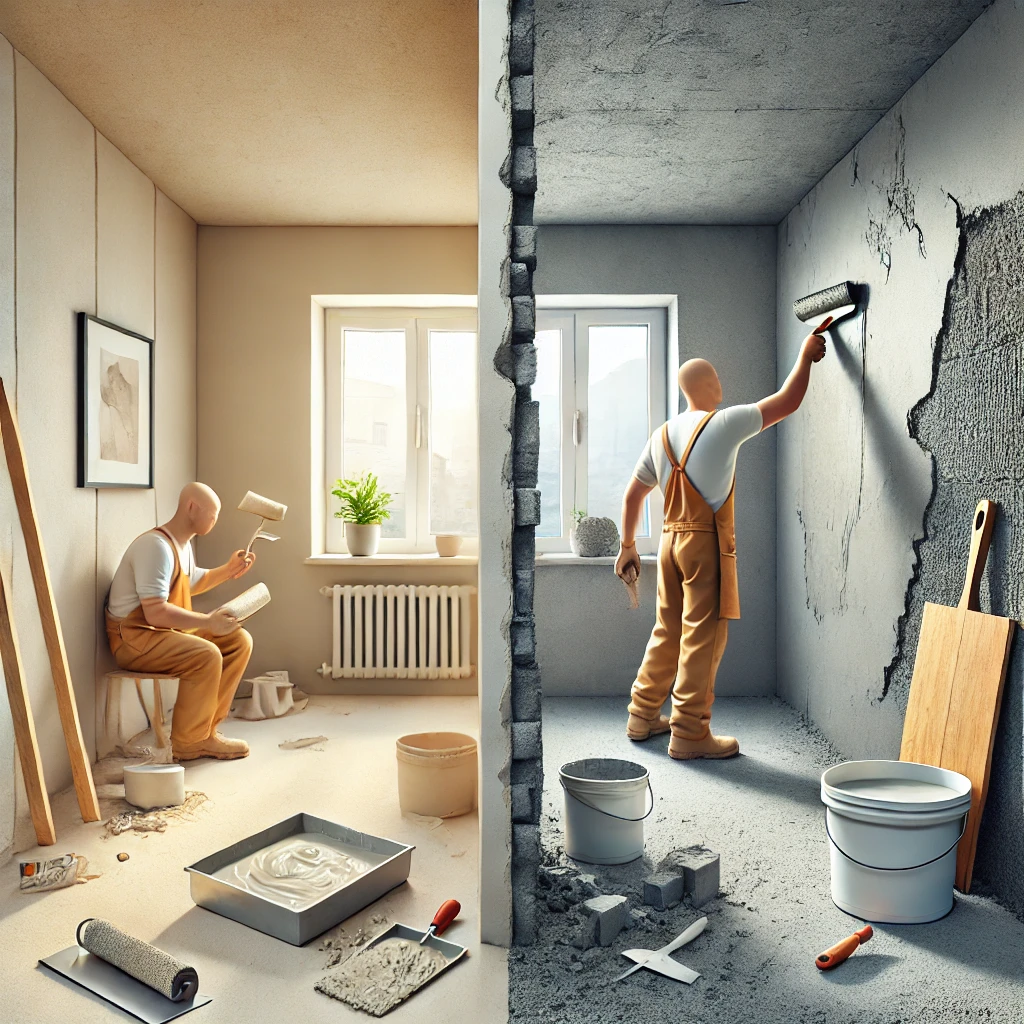When it comes to finishing walls, many people get confused between plastering and rendering. While they might seem similar, they actually serve different purposes and are used in different areas of a building. If you’re planning a home improvement project or working on a construction site, understanding these differences will help you make the right choice.
What is Plastering?
Plastering is the process of applying a smooth layer of material to interior walls and ceilings. The main goal is to create an even surface that can later be painted or decorated. Plastering enhances the durability of walls, hides imperfections, and provides a clean, professional finish.
Types of Plaster
- Lime Plaster – Flexible and breathable, often used in older homes.
- Cement Plaster – Strong and durable, but less flexible than lime.
- Gypsum Plaster – Lightweight and quick-drying, ideal for modern interiors.
What is Rendering?
Rendering, on the other hand, is applied to exterior walls to provide a protective and decorative finish. It acts as a shield against weather conditions, preventing water damage and improving insulation. Rendering also enhances the appearance of a building, giving it a fresh, polished look.
Types of Rendering
- Cement Render – Durable and cost-effective, commonly used on exterior walls.
- Acrylic Render – Flexible and crack-resistant, available in different textures.
- Lime Render – Ideal for historic buildings as it allows walls to breathe.
- Silicone Render – Water-resistant and self-cleaning, great for low-maintenance finishes.
Key Differences Between Plastering and Rendering
| Feature | Plastering | Rendering |
|---|---|---|
| Location | Interior walls & ceilings | Exterior walls |
| Purpose | Smooth finish for decoration | Weather protection & aesthetics |
| Materials | Gypsum, lime, cement | Cement, acrylic, lime, silicone |
| Texture | Smooth | Rough or textured |
| Thickness | Generally thinner | Thicker for durability |
Which One Do You Need?
If you’re working inside your home, plastering is the way to go. It provides a sleek, paint-ready surface that makes your rooms look polished and well-finished. If you’re looking to protect and enhance the exterior of your home, rendering is the better option. It not only improves the building’s curb appeal but also adds an extra layer of protection against rain, wind, and temperature changes.
Final Thoughts
Both plastering and rendering are essential techniques in construction and home renovation. Whether you’re working on a new build or renovating an old property, choosing the right method will ensure your walls stand the test of time. If you’re unsure, consulting a professional plasterer or renderer can help you achieve the best results for your project.
Do you have a plastering or rendering project coming up? Drop your questions in the comments—we’d love to help!

